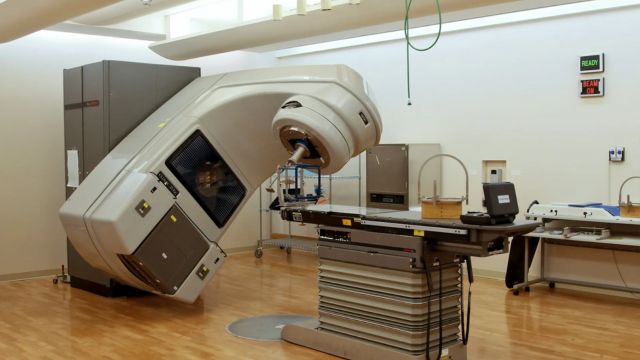Production downtime can have major effects on the bottom line as well as on product availability, compliance, and patient care in the very controlled and competitive medical manufacturing sector. Downtime is the term used to describe times when production is stopped for a variety of reasons including supply chains interruptions, equipment breakdowns, or even manpower shortages. Maintaining a high degree of operational performance in medical manufacturing—where accuracy and efficiency rule—reducing downtime is crucial.
Effective tactics and solutions to reduce production downtime in medical manufacture will be discussed in this article so that your operations run compliantly, effectively, and without disturbance.
1. Implement Preventive Maintenance Programs
Starting a preventative maintenance (PM) program will help to lower production downtime among other things. Before failures arise, preventive maintenance—which includes routine inspections, service, and equipment and machinery testing—is By use of this proactive strategy, any possible problems are found and resolved before they cause disturbance to the manufacturing process.
How to implement:
- Schedule routine maintenance based on manufacturer recommendations and equipment usage.
- Use data from your production line to predict when certain parts are likely to wear out.
- Train your staff to identify early warning signs of equipment malfunctions, such as unusual sounds or vibrations.
Addressing such problems before they become more serious will help you greatly increase the lifetime of your machinery and prevent unplanned downtime.
2. Embrace Predictive Maintenance
Predictive maintenance uses statistics and analytics to forecast when a piece of equipment will break, unlike preventative maintenance—which follows a set timetable. This method tracks machinery status using sensors and real-time monitoring, therefore allowing producers to plan repairs precisely when required.
How to implement:
- Equip machinery with sensors that monitor variables like temperature, vibration, and pressure.
- Use software platforms to analyze data and predict when a failure is likely to occur.
- Align predictive maintenance schedules with production workflows to minimize disruption.
Predictive maintenance helps you to maximize equipment productivity while reducing unneeded downtime. In high-precision sectors like medical device manufacture, where even a minor delay might cause major losses, this is particularly beneficial.
You may like this: Integrating Artificial Intelligence (AI) into Medical Device Manufacturing for Predictive Maintenance
3. Invest in Smart Manufacturing Technologies

Including smart manufacturing technologies—like the Internet of Things (IoT—can help to drastically lower downtime. IoT devices let equipment interact with one another and deliver real-time performance data to centralized management systems. Including IoT into your manufacturing line will let you to remotely control processes, track equipment condition, and even forecast breakdowns.
How to implement:
- Install IoT sensors on key machinery and equipment.
- Use cloud-based platforms to track performance data and receive alerts when equipment is underperforming.
- Analyze real-time data to make immediate adjustments and prevent downtime.
Using smart manufacturing technologies helps you to better control your production process, therefore allowing you to respond fast to developing problems and lower unplanned downtime.
4. Optimize Employee Training
Another main reason of manufacturing delay is inadequate training. Errors that could cause machine stoppages or quality flaws might arise when workers lack knowledge in running tools or handling particular duties. Effective handling of machinery and troubleshooting of minor problems before they become more significant depend on workers being ready for these tasks through comprehensive training programs.
How to implement:
- Offer regular training sessions to new and existing employees, focusing on equipment operation, maintenance procedures, and troubleshooting techniques.
- Implement hands-on, real-world training using the actual machines to increase familiarity and confidence.
- Continuously update training materials to include new technologies or procedures.
By equipping your workforce with the right skills and knowledge, you ensure smooth operations, reduce mistakes, and limit downtime.
5. Streamline Spare Parts Management
Lack of important spare parts can result in major delays for maintenance or repairs activities. Reducing production downtime mostly depends on making sure the correct parts are accessible when needed.
How to implement:
- Maintain an organized inventory of spare parts, categorized by importance and frequency of use.
- Use software solutions to track inventory levels and automatically reorder parts that are running low.
- Partner with reliable suppliers who can deliver parts quickly and efficiently.
With a well-stocked inventory of critical spare parts, you can significantly reduce the time spent waiting for parts to arrive and minimize downtime during maintenance or breakdowns.
6. Enhance Communication and Collaboration
Reducing downtime depends on efficient cooperation and communication between several departments—maintenance, manufacturing, and logistics. Encouragement of communication guarantees that every team knows of any current problems and can react fast to them.
How to implement:
- Implement digital communication platforms that allow all departments to stay informed in real-time.
- Schedule daily or weekly meetings to discuss ongoing issues and upcoming maintenance activities.
- Encourage feedback and suggestions from employees on ways to improve operational efficiency.
When communication is streamlined, it becomes much easier to identify and address problems before they affect production schedules.
7. Utilize Data Analytics for Continuous Improvement
Manufacturers can find trends causing downtime by compiling and evaluating production data. Data analytics can expose underlying reasons of downtime like machine performance problems, workflow bottlenecks, or even regular supply chain delays.
How to implement:
- Install data collection systems that track production metrics such as cycle times, machine uptime, and output quality.
- Use data analytics tools to analyze this information and identify areas for improvement.
- Continuously refine processes based on data-driven insights to reduce downtime.
Using data analytics, you can implement targeted improvements that enhance overall production efficiency and reduce downtime over time.
You may like this: The Impact of 3D Printing in Medical Device Prototyping and Production
Conclusion
In medical manufacturing, lowering production downtime calls for a multifarious approach combining modern technologies, preventative measures, and efficient management techniques. Preventive and predictive maintenance, smart technology investments, staff training, and spare part management optimization help you to reduce interruptions and guarantee that your manufacturing line operates effectively and without disturbance.
These techniques will help you to improve your operational performance, keep regulatory compliance, and raise your capacity to satisfy market demand.
Stay ahead in the medical manufacturing industry by staying informed. Subscribe to our newsletter for the latest updates on medical supplies, clinical engineering advancements, and manufacturing innovations. Get valuable insights, expert tips, and industry news straight to your inbox at JandJ Supplies.








